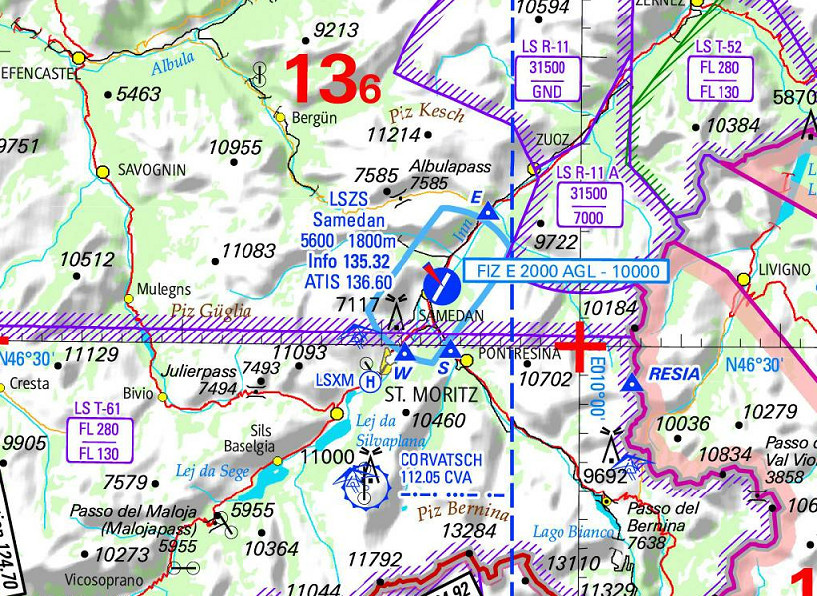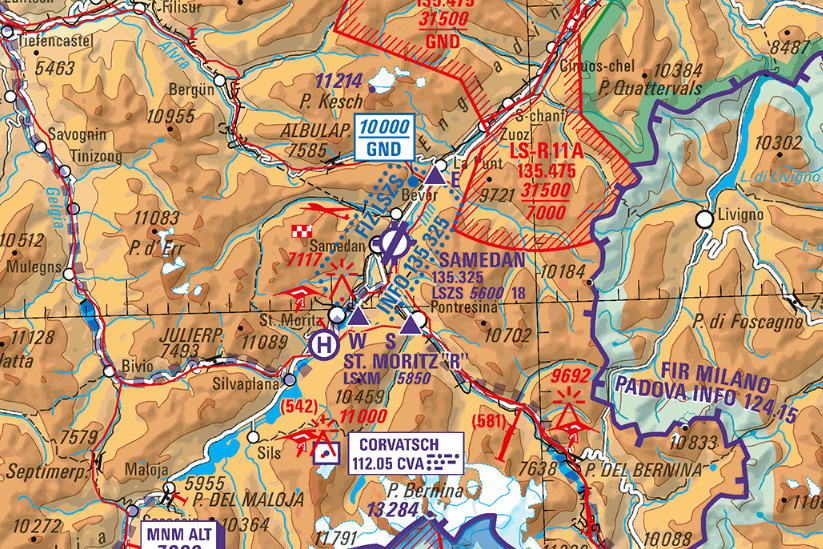We are drifting away slowly hear so I would like to ask you another question. There is no question regarding the VFR/VMC requirement for landing at Samedan.
But what about take off? Would you say that the clouds must be above MSA in the area to take off?
I would not like to take off in proper shitty weather but I could see myself do it if the clouds are slightly below MSA. Going there with a turboequipped airplane with EFIS and an updated terrain database wouldn’t be considered that risky to me.
What do you think? Unfortunately the briefing mentions nothing on this except for the density altitude concerns…
At most sea level VFR airports you would/could take off and enter IMC before MSA without any legal concerns as long as you are flying IFR.
Flyer59 wrote:
5600 ft Elevation is a lot
It is only slightly more than Denver 
Anyone with any ideas on post 27 above?
Fly310 some pilots do climb into IMC below ridge height heading west using TAWS or other terrain mapping – not sure I would chose to do this. Have only flown in the area with VMC up to MSA.
Net take off flight path calculation in a normally aspirated piston twin, or turbo, for that matter, would be interesting.
Not sure the valley over Samedan is that wide to carry out a climb comfortably in a FMS hold over the airport, but that might be an option.
+Fly310 wrote:
Going there with a turboequipped airplane with EFIS and an updated terrain database wouldn’t be considered that risky to me.
So you would like to enter IMC in an alpine canyon valley and rely on the terrain database for guidance during climb to MSA?
Yes and no. It all depends on the circumstances. I would like to know how it is actually done on this particular aerodrome. I would certainly not do IMC from 500 ft AGL until MSA but could see myself doing 1000 ft in IMC before reaching MSA if I have good information of the surroundings. But I need to draw the line somewhere.
And now we are talking departure, not approach, which means we are going up with 1000 fpm at least.
First of all:
Is it illegal to depart if clouds are below MSA?
Where I usually fly it is not.
The rules are maintain VFR until operating under IFR with Swiss radar. In practice I take this to mean 11,000’.
Is it illegal to depart if clouds are below MSA?
In Europe, this depends firstly on whether the airport is in CAS. If it is, it will have its own VFR minima for arrivals and departures.
The 2013 Jepp charts shows no CAS

The 2016 Swiss ICAOVFR chart also shows no obvious CAS

So it is down to airport’s own regs, if any.
The rules are maintain VFR until operating under IFR with Swiss radar. In practice I take this to mean 11,000’.
If that was enforced, they would not have had any crashes, however  What Fly310 is asking, AIUI, is whether the tower will refuse to give you a departure clearance if the cloudbase is below some figure.
What Fly310 is asking, AIUI, is whether the tower will refuse to give you a departure clearance if the cloudbase is below some figure.
Peter wrote:
What Fly310 is asking, AIUI, is whether the tower will refuse to give you a departure clearance if the cloudbase is below some figure.
You understand correct. I am not after the risk assessment, more the legal aspects of it since I can’t seem to find anything about it. I have sent an email to the airport with a few other questions as well so we’ll see what they say. In Sweden you could more or less take off from a VFR only strip(Class G airspace) in really bad weather. Outclimbing the obstacles in your intended flight path is obviously an advantage…
There is no tower in Samedan only a FISO so departure will be at your own discretion.
1000 fpm climb in the mountains is not a lot.